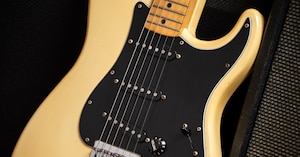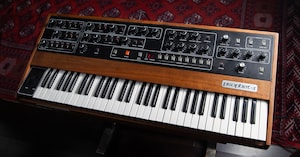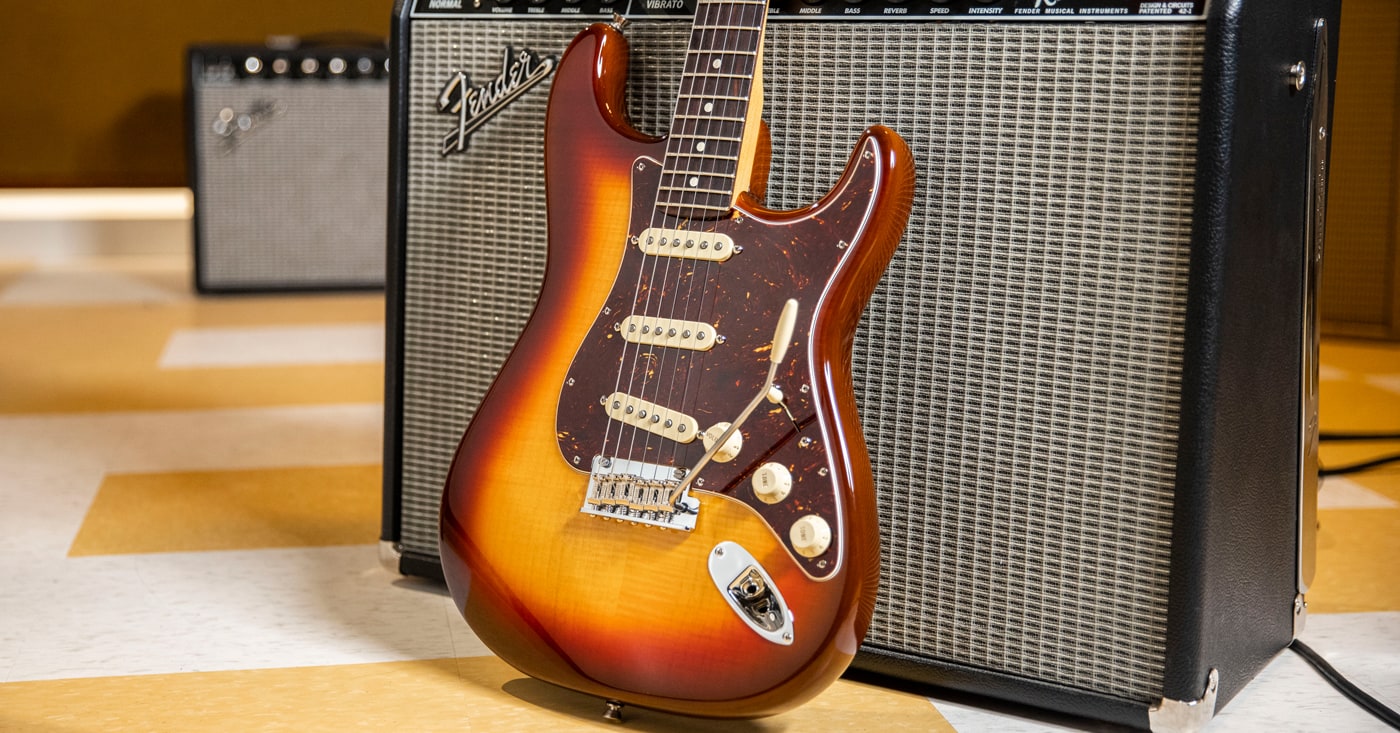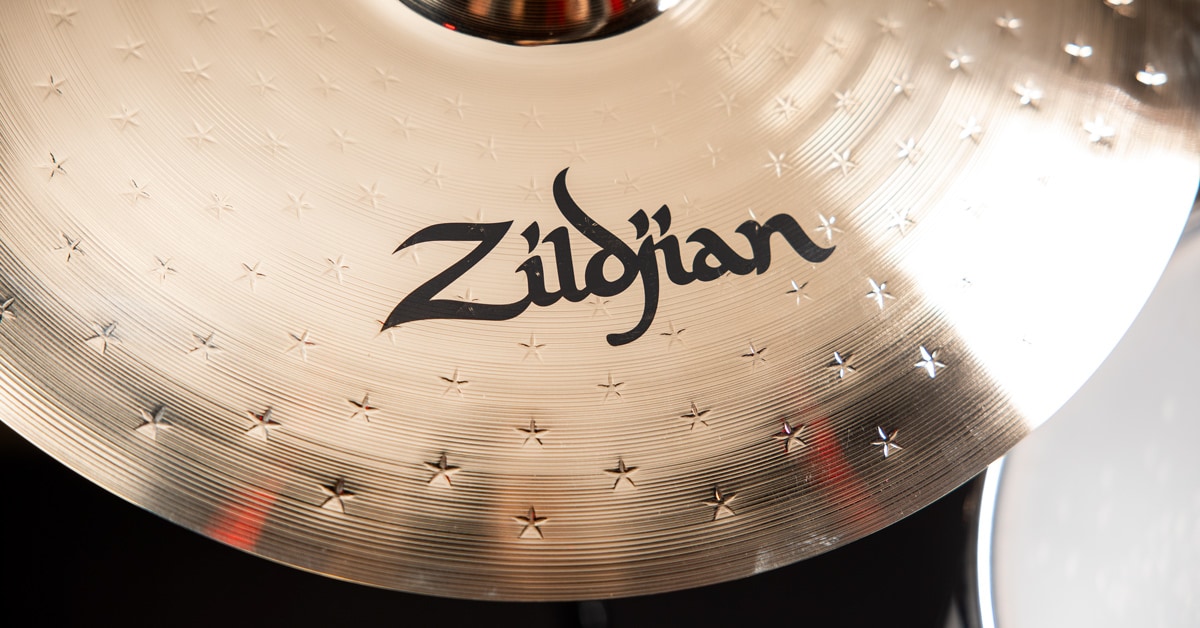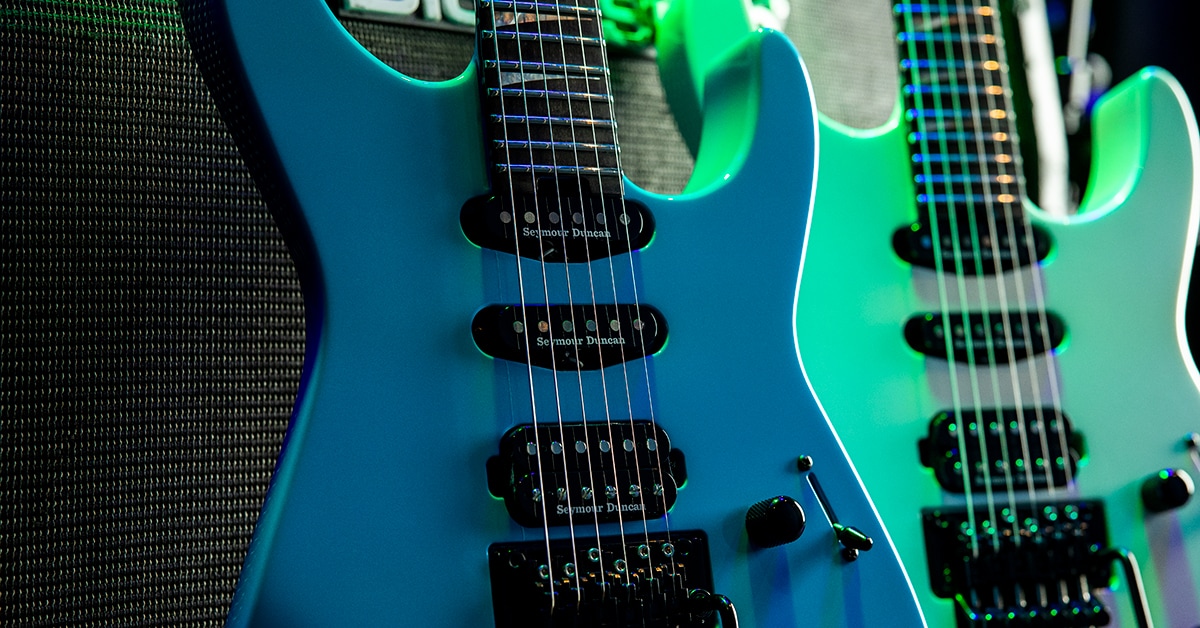The rumblings were loud and clear for some, and nearly imperceptible to others. Something massive and unique and exhilarating was busting its way through conventional guitarcraft, forging an evolution of technique and tone that would disrupt guitar making, music production, promotional videos, and even fashion culture and the pop charts throughout the late 1970s and mid ’80s.
This was the dawn of the Shred Era.
Initiated by soon-to-be legends such as Eddie Van Halen and Randy Rhoads—and aided and abetted by scores of players enthralled and inspired by jaw-dropping speed and otherworldly technique—it was obvious off-the-rack versions of their parents’ guitars weren’t going to deliver the precise ergonomic and tonal elements the new kids were craving. In fact, Van Halen and Rhoads were not just transcendent players, they also had ideas for guitar designs and modifications that would enhance what they wanted their instruments to do.
Happily, a few outliers felt the tremors of change, and they were conspiring with these pioneering guitarists. Luthier Wayne Charvel fell in with Van Halen—a relationship that sparked a meteoric rise for Charvel Guitars—and Grover Jackson, who ended up buying Charvel’s company, worked with Rhoads, leading to the birth of Jackson Guitars. The writing was on the wall. Soon, everyone wanted to be Eddie Van Halen—or, at least, play like him—and the desire for high-performance, shred-ready guitars exploded.
Jackson was one of the seminal brands in this artistic toppling of the status quo, and its Concorde, Soloist, King V, Kelly and Dinky models helped define the new generation of guitar action heroes. The company’s fortunes changed as the 1990s deemphasized extraordinary technique, but the current onslaught of YouTube, Instagram and TikTok guitarists with astounding skills and often-idiosyncratic musical concepts have turned the spotlight back on high-octane guitars. To meet increased demand for these revved-up instruments, Jackson—which was acquired by Fender in 2002—zoomed back to its roots as a made-in-America shop for the Jackson American Series Soloist SL3.
Jon Romanowski, a 12-year veteran at Fender, was assigned to build a team to reenergize the Jackson brand since the day he walked in the door. A Soloist player himself—“An EVH Stealth head into two 4x12 cabinets, and I’ll be making racket all day long”—Romanowski discusses the origins of Charvel and Jackson, the Southern California guitar-making/modding phenomenon, he and his team’s journey to create Jackson American Series models, and the support of Fender CEO Andy Mooney, who just happens to be a metal fan.
The history of Jackson Guitars includes a lot of big-name builders and players. Can you give us a brief background on how it all started?
Jon Romanowski: To put this in context, when it all started, I was 10 years old. This was initially Wayne Charvel's business. He was repairing guitars for Fender, and he was also doing his own thing. In the mid to late '70s, there was this huge movement about modifying guitars for better performance as the technical prowess of players started to rise. One of the key people who gravitated to Charvel was Eddie Van Halen. No one knew who Ed was until that first Van Halen record came out. Ed’s impact on guitar is probably tantamount to what happened with Jimi Hendrix or Les Paul. Everybody wanted to do what Eddie did, and, suddenly, he put this little shop in the limelight.
Grover Jackson was an employee of Charvel, and after about a year of intense visibility and business, Wayne wanted to get out. So, he sold the company to Grover. Now this shop becomes a beacon for every hotshot guitar player in Southern California, and in walks a gentleman by the name of Randy Rhoads. He just got a gig with Ozzy Osbourne—who had been thrown out of Black Sabbath—and Randy had some preconceived notions of what kind of guitar he wanted. Unlike Ed, who played Strat-like objects, Randy was into shapes and set necks, so they took things one step further and designed a guitar that had through-neck construction. And they wanted to do it in a Concorde shape. Grover worried this thing looked so weird and so different from what he was doing that he shouldn’t brand it as a Charvel. So, he goes, “Hey, can we call it a ‘Jackson’?” Randy was like, “Yeah, sure.” And that's what happened.
So, now it’s 1980, ’81, ’82, and you've got two hotshot guitar players. Eddie is associated with Charvel, and Randy comes out with this Jackson-branded thing. It starts this whole new movement in terms of guitars and high-performance playing. These guitars had slim necks, jumbo frets and radiused fingerboards. Everything about the guitars made them easier to play—especially the calisthenic, physical-type stuff. Competitor brands such as Kramer were around at the time, and, later on into the decade, Ibanez and ESP start to emerge. But Charvel and Jackson were at the forefront of the high-performance movement.
Some of Jackson’s most iconic guitar models and body shapes came from that era. What inspired those designs?
The Rhoads guitar started off as a Concorde—this Delta Wing looking thing—because Randy was flying to Britain on the Concorde, and that was a big deal back then. He got the guitar and found it was really hard to access the upper frets. So, the next variant was the slimmer Randy Rhoads model you see today with easy access to its 22 frets. We also have 24-fret variants.
Then, Ratt was one of the bands in the Los Angeles area that was coming up at the time. Their guitarist, Robbin Crosby, liked the Rhoads, but he was 6'5", so it looked like a toy on him. He wanted a guitar with symmetrical wings, which they called the King V because his nickname was “King.” He was the guy that started that shape.
The Soloist design started within the organization itself. They were looking for an offset Strat-style guitar with a set neck. Then, they said, “Let's make it pointier.” The Kelly was a guitar they originally built for Bradford Kelly, who was in an Australian heavy-metal band called Heaven. A little later, the Dinky appeared. People wanted a bolt-on variant of the Strat-like guitars—the rounded horns and radiuses—but something that was a little more futuristic. So, they took the Soloist, shrank it down by 20 percent and then elongated it. That became the Dinky.
The last thing they built was the Warrior. They wanted a star-like guitar, but instead of having rounded points, they took the Jackson headstock and put the headstock point on each one of those corners. It was a really innovative time for that organization, and fueled by all kinds of things, I'm sure—such as beer, enthusiasm and youth.
What was it about Jackson guitars that drove players to seek them out?
I think the feel of the neck. They weren't just slim, they fit the hand really well. You could play for a long time without getting fatigued. The jumbo frets were also a big deal, and the fingerboard was compound radius. It started out at 12" and went to 16", flattening out as you neared the upper frets. So, if you're doing chords around frets one to nine, you’ve got a lot of support. But as you move higher up to play solos, the wider fingerboard allows you to bend more easily. Then, we offered what a lot of other brands at the time didn’t—locking tremolos, high-output humbuckers, and flashy colors and designs. It was almost like the player designed the guitar—not the other way around.
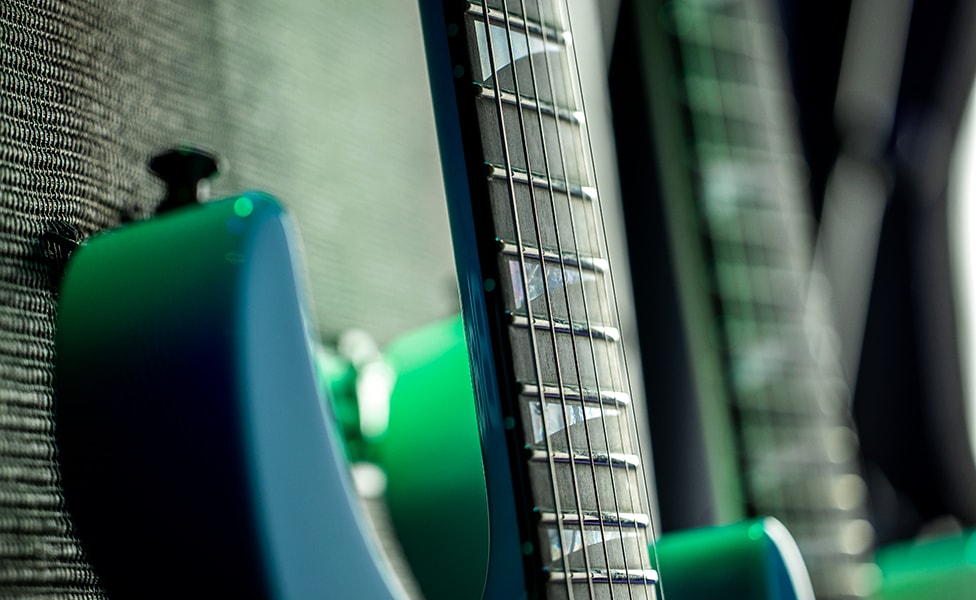
What was the atmosphere inside of the company at the time?
It was entrepreneurial. The bigger companies weren't really paying attention to how playing was evolving. Also, look back at reviews for the first couple of Van Halen records, and you’ll see comments like, “This is a ruckus. It's noise.” People didn’t initially like the way the music sounded. Nonetheless, Van Halen pretty much redefined how a guitar should be built. The fact that he, Randy and others were using instruments modified by small shops proved new brands were on the upswing and doing something the bigger companies were ignoring. Jackson and Charvel rivaled—if not surpassed—the size of Fender and Gibson in the mid ’80s. It was a very interesting point in time. And, like any entrepreneurial endeavor, these new companies were bootstrapping, using their wits and working long hours. But they were young, and it was fun. A whole movement was happening here in Southern California.
40 years on from those formative days, Jackson is back to doing production in the USA.
I can't take credit for that. That's our CEO, Andy Mooney. Andy is a big metal head. He's into Korn, Slipknot and all that stuff. But we were looking at growth opportunities—not nostalgia. Charvel and Jackson are owned by Fender, and those brands were generating a lot of momentum. You just kind of go, “Yup, the wind is blowing in the right direction. Now is the time to do this.”
How much of that momentum do you attribute to the upswing of “Instagrammable,” acrobatic guitar playing?
I think the technical proficiency example is really important. It sort of came back in the early 2000s, when metal was hot in Northern Europe. We could see remnants of shred starting to flare up, and we're still feeling the aftereffects of that some 20 years later. The internet just fuels that. These guitars are perfectly designed to help enhance that type of playing.
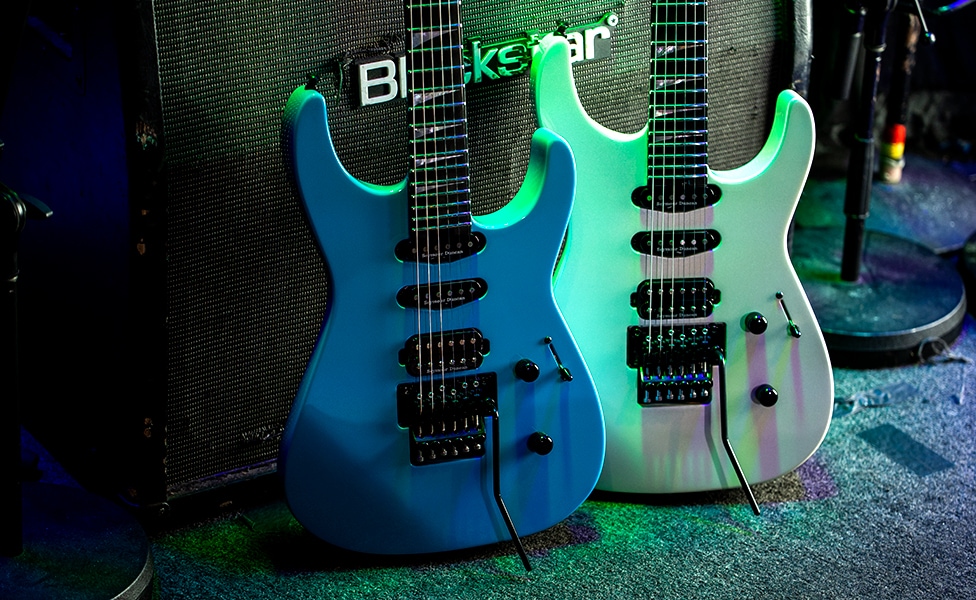
What was the reasoning behind having the Soloist SL3 as the first USA-made production model?
Again, I'll give Andy credit for that. We asked ourselves, “What's the quintessential Jackson guitar that can be the spokesperson for the entire line?” We felt the Soloist had a more universal appeal—especially when you consider Jeff Beck gravitated to it in the 1980s. Suddenly—boom—he's playing with Rod Stewart and Tina Turner, and he shows up with a pink Soloist. We picked the HSS configuration, because it’s the most popular pickup configuration of anything we sell across Jackson, Fender and Charvel. HSS gives you the most flexibility in terms of sound, whether you want to play metal, pop, or anything else.
Once you set your sights on reimagining the Soloist, did you hunt down a bunch of original models for reference?
That’s exactly right. I have an ’85 Soloist, and a ’87 Student model I got for high school graduation, and we collected a lot of other examples. We’d look at them and ask ourselves things such as, “Should we put binding on it or not?” Then, we’d go through the collection and discuss options—like, “Binding is cool, but on the ’80s Student model there was no binding. The fingerboard was rolled, and the neck felt really comfortable.” In this case, after we tallied things up, no binding won.
Neck-through construction is also important. We decided to go with a three-piece. We’re using two-piece maple, and we glue it in such a way that the grain lines are opposing, so it’s stronger. We put graphite rods in there, too—which is a trick we learned from Van Halen. We like a real flat fingerboard, so graphite rods flank the truss rod for better stability. That’s where you get the best playing experience. An ebony fingerboard and jumbo frets are must-haves, and we wanted the headstock to match the body, because it looks better visually. Obviously, some of the ’80s guitars had a black headstock, but we were like, “It’s 2022. The ’80s aren’t calling!”
In fact, the throwback consideration prompted us to consider how to make the Soloist a mixture of modern and original elements. For example, instead of using pickup-mounting rings, we do a clean mount, which is more of a modern guitar thing. We like the durability of stainless steel components, because those are the pieces that typically rust. Then, we opted for the Floyd Rose 1500 tremolo, because Van Halen used them on all of his guitars, and Jeff Loomis has one on his Signature Pro Series Soloist. Those guys know where it’s at.
What drove the selection of the Seymour Duncan JB and Flat Strat pickups?
A Seymour Duncan JB is a quintessential thing with Jackson and Charvel. No one has ever complained about that. The Seymour Duncan Flat Strat pickups we went with gave us the best tone, but as the pole pieces are flat, the strings don’t hit them when you play aggressively. It was a mixture of functionality and tone.
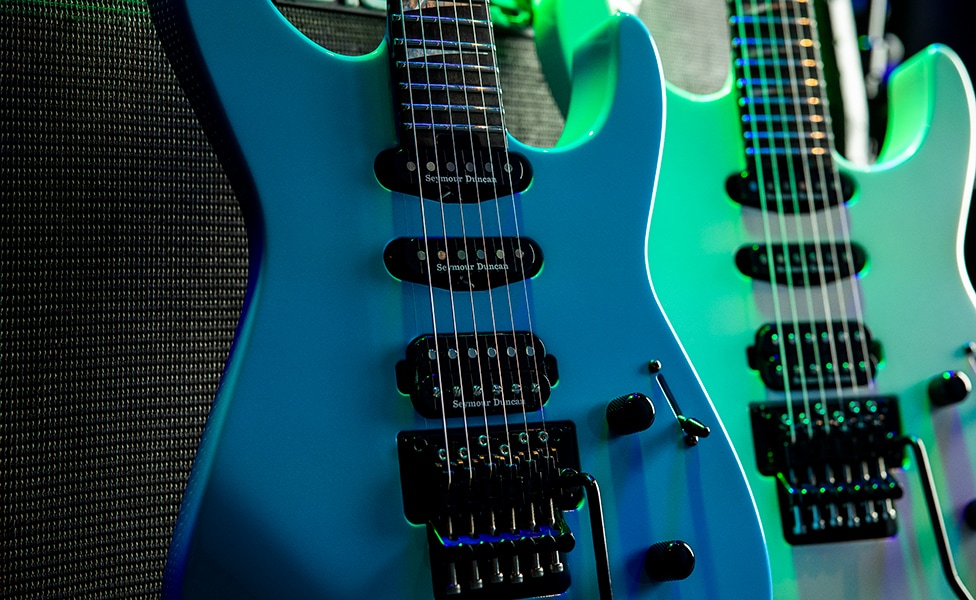
The Soloist has been around long enough to find its way into the hands of all sorts of players. Given its long history, were you in any way concerned about the reception for a reimagined model?
Actually, we thought the initial sales expectations were way too high, but we absolutely creamed them. Clearly, our ability to predict the future is a little off. We should not be picking Lotto numbers. Right out of the gate, the Soloist is doing way better than we thought—to the point that we’re now playing catchup. In fact, we’ve pushed off our next release so that we can spend more time catching up. It didn’t make sense to pile additional models on top of each other.
What do you think is driving that sales success?
We’ve seen feedback from two big constituencies—young, emerging guitarists and seasoned players. It appears a lot of the things we’ve done with the Soloist resonate really well with both types. For example, there are experienced players who may have considered buying a Custom Shop guitar, but thought, “Well, that’s kind of pricey. Wait a minute. This USA Soloist makes a lot of sense.” Overall, it’s really an untapped market we walked right into. Andy thought of it as a missed opportunity, and his instincts were 100-percent right.
Who are some of the younger players Jackson is really excited about?
The first people who come to mind are Misha Mansoor and Tosin Abasi. They are like the Van Halen and Rhoads of this generation.
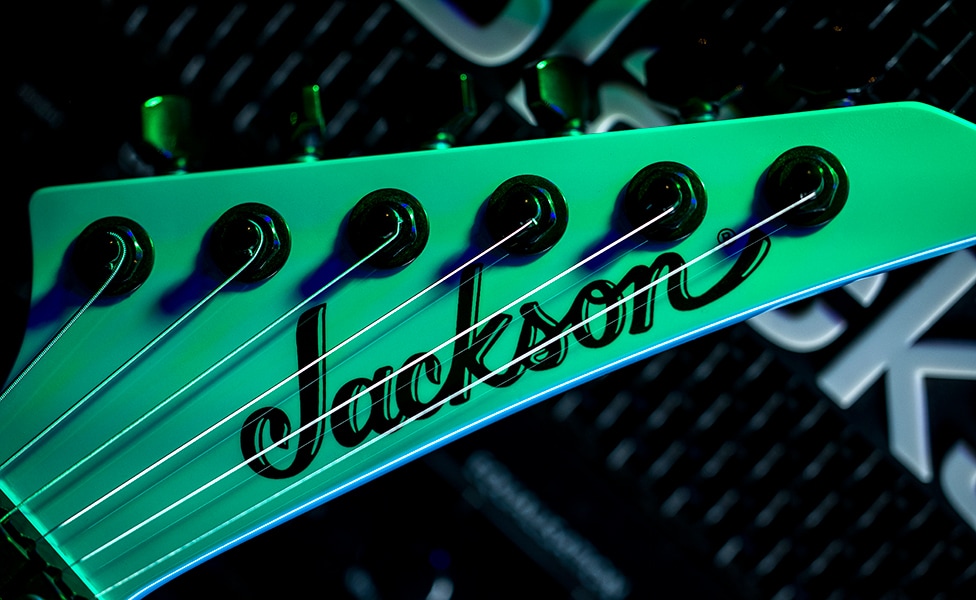
And they seem to be just as passionate about designing guitars as those two icons.
Yes. It’s very interesting to see their approach to guitar design—the things they like and the things they don’t. For example, the Van Halen method was to do whatever you needed to make your guitar play great. Aesthetics were kind of secondary. But for Mansoor, Abasi and the Jackson Soloist, the form, function, and aesthetics are just as important. Things such as Luminlay side dots—which we didn’t have 20 or 30 years ago. You just had to make sure you knew where you were. The HSS pickup configuration allows you to do different things. It's not just two high-output humbuckers driving one type of sound. There are some subtleties there. A lot of the modern players tend to remind us, “We’ve got a pulse on this.” And that information works its way into new designs—such as this group of Jackson instruments.
Any upcoming plans you can tease for Jackson’s USA production lineup?
We typically don't comment about future projects in depth, but I'll leave you with this—in 2023, we will launch probably the second most popular platform we have. That is, if everything goes according to plan. Our intention over the next three years or so is to initiate an eight- to 10-month rotation and create a family. Although, depending on player feedback, we may zig instead of zag. That's all I can say for now.
What’s the best way for a player to see if a Soloist SL3 is right for them?
Ultimately, I would encourage people to play the guitar. There's a certain group of buyers who don’t go in the shops—they buy with their eyes. I think you’re doing yourself a disservice if that’s your method. I would never buy a car sight unseen. You need to drive it. God forbid you get in, and you can't see over the dashboard. When you try a Soloist, you're going to see and feel the passion and talent that drives everything here at Jackson. It’s in these guitars. These things will blow a lot of peoples' minds.


